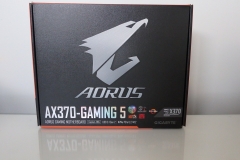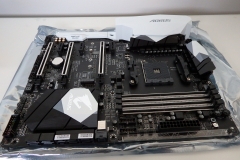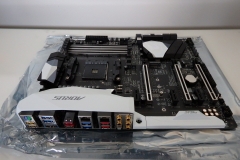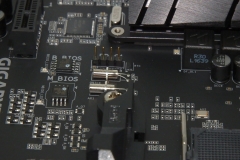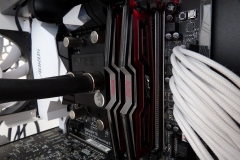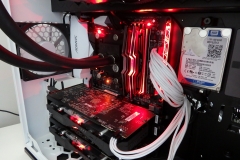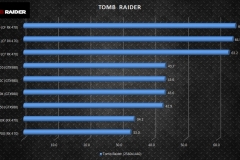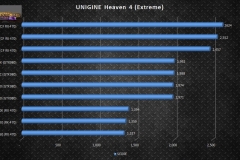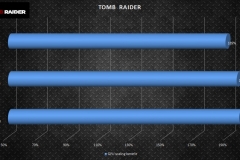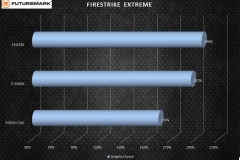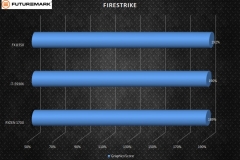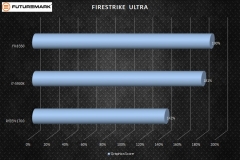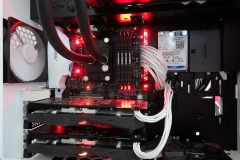AMD’s Ryzen CPU line-up has been one of the most anticipated technology product releases in a long time and yes it has been worth the wait. We were all wondering if Ryzen would stack up to AMD’s hype and the collective hope of the community – thankfully, AMD has delivered their new platform in a move certain to disrupt the CPU market of 2017. The ageing AM3+ platform has lasted longer than it probably should have and the CPU market has seen a distinct lack of competition at the top end for at least the last 5 years.
Times have changed since the previous Bulldozer generation of AMD CPUs – the gaming community have a wider range of needs with more consumers becoming ‘creators’. YouTube, Game streaming, game creation and other digital arts are becoming more popular with software tools being made easier to learn, more freely available and able to utilise multiple CPU cores. With more community-based support for creative applications via tutorials, forums and instructional videos, anyone can try their hand at creating and/or sharing content as long as they have the necessary processing power at a hardware level. This shift from content consumption to content creation is likely to increase the demand for CPUs with more than the standard 4 cores.
Gaming engines are also more sophisticated in 2017 with heavier graphics, physics and data files. Whilst the graphics card almost always determines the immersion, no gamer wants to be bottlenecked by their CPU. This holds true for streamers who need their rig to be able to both play the game and simultaneously convert/stream the content to an audience.
The Ryzen 7 1700 CPU is the lowest priced offering in the Ryzen 7 series and as the most economical 8 core / 16 threaded option I was really keen to see what it offered in terms of performance. Our AMD supplied test platform included a Ryzen 7 1700 CPU with Gigabyte Aorus AX370 Gaming 5 motherboard and EK-XLC Predator 240mm liquid cooler. We made up the rest of the test system with other review sample components that you will see listed in the test system spec.
|
FAMILY |
AMD Ryzen™ |
AMD Ryzen™ |
AMD Ryzen™ |
|
LINE |
AMD Ryzen™ 7 |
AMD Ryzen™ 7 |
AMD Ryzen™ 7 |
|
MODEL |
AMD Ryzen™ 7 1800X |
AMD Ryzen™ 7 1700X |
AMD Ryzen™ 7 1700 |
|
PLATFORM |
Desktop |
Desktop |
Desktop |
|
Foundation |
|||
|
OPN PIB |
YD180XBCAEWOF |
YD170XBCAEWOF |
YD1700BBAEBOX |
|
TOTAL L1 CACHE |
768 KB |
768 KB |
768 KB |
|
TOTAL L2 CACHE |
4 MB |
4 MB |
4 MB |
|
TOTAL L3 CACHE |
16 MB |
16 MB |
16 MB |
|
UNLOCKED |
Yes |
Yes |
Yes |
|
CMOS |
14nm |
14nm |
14nm |
|
PACKAGE |
AM4 |
AM4 |
AM4 |
|
THERMAL SOLUTION |
Wraith Spire (LED) |
||
|
TDP |
95 W |
95 W |
65 W |
|
Performance |
|||
|
# OF CPU CORES |
8 |
8 |
8 |
|
# OF THREADS |
16 |
16 |
16 |
|
BASE CLOCK SPEED |
3.6 GHz |
3.4 GHz |
3 GHz |
|
MAX TURBO CORE SPEED |
4 GHz |
3.8 GHz |
3.7 GHz |
|
Memory |
|||
|
MEMORY TYPE |
DDR4 |
DDR4 |
DDR4 |
|
MEMORY CHANNELS |
2 |
2 |
2 |
|
Key Features |
|||
|
AES SUPPORT |
Yes |
Yes |
Yes |
|
AVX |
AVX2 |
AVX2 |
AVX2 |
|
XFR |
Yes |
Yes |
Yes |
|
AMD SENSEMI TECHNOLOGY |
Yes |
Yes |
Yes |
|
FMA |
FMA3 |
FMA3 |
FMA3 |
|
AMD VIRTUALIZATION |
Yes |
Yes |
Yes |
The above table shows the 3 different AMD Ryzen 7 CPUs. On first glance, the 1700 looks like the runt of the litter. It doesn’t have the Extended Frequency Range (XFR) that automatically increases the boost clock on a single core where a system builder has incorporated superior cooling and/or a performance-grade motherboard.
The TDP of Ryzen 7 1800X and 1700X is 95W but the lower clocked 1700 is only 65W which is great for people wanting a quiet system that generates less heat. The 1700 has stock operating frequencies of 3.0GHz-3.7GHz whilst the 1700X is clocked at 3.4-3.8GHz and the 1800X at 3.6-4.0GHz. It’s important to note that whilst the ‘X’ processors have the ability to extend themselves a little further on one core with decent cooling using the Extended Frequency Range (XFR).
The key thing to note here is that all of the Ryzen 7 CPUs are unlocked so you can overclock them or force a constant speed if you want to tinker. I had our review sample 1700 CPU running at 3.9GHz without any dramas or stability issues with 1.3v. The price is also more appealing and on the face of the specifications represents the potential for a real bargain.
The new AM4 platform is the only platform AMD system builders need to worry about. The 1331-pin socket will support the 7th Generation AMD APU (Accellerated Processing Unit), Ryzen and the future “Raven Ridge” APU. This means that you can buy a board with an APU or entry level CPU, decide to become a power user, developer or content producer and then upgrade the CPU to the top end later without needing to change the rest of your system. Cheaper upgrades and the lack of a need to reinstall the operating system is very handy indeed.
Let’s look at the Ryzen 7 highlights
Ryzen is built on a 14nm manufacturing process. Each CCX package contains 4cores/8 threads – AMD have incorporated 2 CCX packages with a shared cache. This is why the Ryzen Master application requires cores to be disabled in pairs and not individually.
DDR4 Memory support is identical across all 3 CPUs and rated up to 2667MHz and Dual Channel but we are already seeing motherboard manufacturers push the envelope here and there have been several BIOS updates from the board manufacturers to improve memory compatibility.
Ryzen 7 has Simultaneous Multi-Threading (two threads per physical core) with some intelligent cache and prefetch instructions. The cache is broken down as a 64KB for Level 1 instruction and data with 512KB dedicated L2 cache per core then an 8MB shared L3 cache that is accessible by all 4 cores of the CCX package. In the case of the 8 core, 2 CCX package Ryzen 7 CPUs, this this works out to be 768KB of L1 cache in total, 4MB of L2 cache and 16MB of L3 Cache. The pre-fetching algorithms were designed and implemented to enhance the throughput of the cache and execution engines.
AMD SENSEMI technology has the task of monitoring and managing the power/thermals of the processor. AMD breaks the explanation down to Pure Power, Precision Boost, Extended Frequency Range (only on 1700X and 1800X Ryzen 7 models as previously mentioned), Neural Net Prediction and Smart Prefetch.
- Pure Power monitors the power draw, temperature and usage of the CPU to optimise the power draw for the workload which can result in reduced heat and noise (from cooling).
- Precision Boost covers tuning performance with 25MHz incremental adjustments to the clocks peed in real time.
- Neural Net Prediction looks at how the applications are using the CPU and prepares the fastest processor pathways for the application instructions based on past behaviour.
- Smart Prefetch is achieved with learning algorithms that can identify the data used by applications and then manage access to that data by preloading it.
The new chipsets dictate what you can get out of the new AMD AM4 CPUs
|
Chipset |
PCI Express® Gen3 Graphics* |
USB 3.1 G2 + 3.1 G1 + 2.0 |
SATA + NVMe |
SATA Express*(SATA & GPP PCIe G3*) |
PCI Express® GP* |
SATA RAID** |
Dual PCI Express® slots |
Over-clocking*** |
|
|
Enthusiast |
X370 |
1×16/2×8 (AMD Ryzen™) 1×8 (A-Series/AMD Athlon™) |
2+10+6 |
6 + x2 NVMe (or 4 SATA plus 1 x4 NVMe on AMD Ryzen™ Processor) |
2 |
x8 Gen2 (plus x2 PCIe Gen3 when no x4 NVMe) |
0,1,10 |
Yes |
Unlocked*** |
|
Performance |
B350 |
1×16(AMD Ryzen™)1×8 (A-Series/AMD Athlon™) |
2+6+6 |
4 + x2 NVMe (or 2 SATA 1 x4 NVMe on AMD Ryzen™ Processor) |
2 |
x6 Gen2 (plus x2 PCIe Gen3 when no x4 NVMe) |
0,1,10 |
No |
Unlocked*** |
|
Mainstream |
A320 |
1×16 (AMD Ryzen™) 1×8 (A-Series/AMD Athlon™) |
1+6+6 |
4 + x2 NVMe (or 2 SATA 1 x4 NVMe on AMD Ryzen™ Processor) |
2 |
x4 Gen2 (plus x2 PCIe Gen3 when no x4 NVMe) |
0,1,10 |
No |
Locked |
|
SFF Options |
X300 |
1×16/2×8 (AMD Ryzen™) 1×8 (A-Series/AMD Athlon™) |
0+4+0 |
2 + x2 NVMe (or 1 x4 NVMe on AMD Ryzen™ Processor) |
1 |
x4 Gen3 (plus x2 PCIe Gen3 when no x4 NVMe) |
0,1 |
Yes |
Unlocked*** |
|
A300 |
1×16 (AMD Ryzen™) 1×8 (A-Series/AMD Athlon™) |
0+4+0 |
2 + x2 NVMe (or 1 x4 NVMe on AMD Ryzen™ Processor) |
1 |
x4 Gen3 (plus x2 PCIe Gen3 when no x4 NVMe) |
0,1 |
No |
Locked |
Notes: Features are preliminary and subject to change without notice. Customer should always consult the latest technical documentation for design and product specifications.
*Each SATA Express port functions as either two SATA 3.0 ports or 2 PCI Express® Gen3 lanes. These 2 PCI Express lanes can be combined with 2 general purpose PCI Express to form a 4-lane PCI Express port.
**SATA RAID through optimised driver. Does not include RAID for NVM Express.
***Performance thermal solution required for overclocking.
Ryzen Master – overclocking made easy
This sounds like something out of a Karate movie but it really is one of the easiest CPU overclocking tools going around for the average enthusiast. We were able to overclock our 1700 CPU to 3.9GHz without touching the BIOS. 3.9 seemed to be a firm limit to the CPU in the end with our 4.0GHz overclock being less than stable despite tweaking and adequate cooling. Ryzen Master allows you to tweak the cores and disable them in pairs which can help in terms of temperatures, power usage and overclocks. There is a provision to save settings in pre-sets as well plus an easy to read monitoring strip.
We’ve been using Wattman a bit with our RX460, RX470 and RX480 testing so Ryzen Master felt very familiar to me from a UI and terminology point of view.
I want to highlight that this review doesn’t compare the Ryzen 7 1700 processor to the current front-line offerings from Intel – there are already dozens of highly credible reviews and benchmarks available that have done this comparison to death. These tests evaluate new Ryzen options against the previous generation AMD CPU, the FX8350 and the Intel Core i7-5930K with a focus on upgrade and value.
The results are intended to indicate the performance benefit of upgrading from the previous generation FX8350 and the value for money comparison against the almost $400 more expensive 6 core Intel i7 5930K.
TEST SYSTEMS
AMD 990FX Platform
We have a dedicated AMD platform with 4 core / 8 thread AMD FX 8350 test bench here in the lab and it represents what many AMD users are likely to be upgrading from. The AM3 platform has been around since early Feb 2009 and received a modification to AM3+ to support the Bulldozer architecture along the way, an update that was backward compatible with AM3. This longevity is important but has come to an expected end with Socket AM4 and Ryzen. The FX8350 CPU in our AMD AM3+ platform CPU currently retails for $229
Full Specification
- AMD FX 8350
- 16GB ADATA XPG V3
- Gigabyte 990FX Gaming motherboard
- AMD Wraith Cooler
- MSI GTX 980 Gaming 4G, 2x ASUS RX 470 STRIX 4GB
- Kingston M.2 120GB SSD
- Western Digital Black 6TB HDD
- Cooler Master V1000 PSU
- Cooler Master Cosmos SE Case
- Logitech G910 keyboard
- Logitech G900 Mouse
- Logitech Z533 desktop speakers
- Kingston HyperX Cloud headset
- BenQ XL2730Z Freesync Display
Intel X99 Platform
Our standard test system is an Intel X99 based platform with a 6 core / 12 thread i7-5930K CPU. This CPU released in August 2014 is still available in retail outlets for approximately $819
Full Specification
- Intel i7-5930K
- 32GB Kingston Savage DDR4 3000
- MSI X99S Gaming 7 motherboard
- MSI GTX 980 Gaming 4G, 2x ASUS RX 470 STRIX 4GB
- Fractal Design Kelvin S36
- ADATA SX900 256GB SSD
- Western Digital Blue 4TB SSHD
- Corsair HX850 PSU
- Fractal Design Define R5 case
- Logitech G910 keyboard
- Logitech G900 mouse
- Logitech Z533 desktop speakers
- Kingston HyperX Cloud headset
- BenQ XL2730Z Freesync Display
AMD Ryzen Test System
The Ryzen test system has a Ryzen 7 1700 CPU, Gigabyte Aorus AX370 Gaming 5 motherboard with the extremely capable EK-XLC Predator 240mm AIO Water cooler – all supplied by AMD for this review. We added the remaining components from our other review samples to end up with the spec below.
Full Specification
- AMD Ryzen 7 1700
- 32GB Kingston Predator DDR4 3333
- Gigabyte Aorus AX370-Gaming 5 motherboard
- MSI GTX 980 Gaming 4G, 2x ASUS RX 470 STRIX 4GB
- EK-XLC Predator 240mm AIO Water Cooler
- Samsung Evo 840 250GB SSD
- Western Digital Blue 1TB SSHD
- Fractal Design Integra-M 750W PSU
- In Win 303 Case
- Logitech G910 keyboard
- Logitech G900 mouse
- Logitech Z533 desktop speakers
- Kingston HyperX Cloud headset
- BenQ XL2730Z Freesync Display
All systems had Windows 10 operating in ‘High Performance’ mode under the Power Settings. This is not a default setting for Ryzen and you have to manually set it but it is a one-off task and only takes about 20 seconds to get there and change the option.
We ran the first round of tests with our GTX 980 card as it is the single fastest card in the lab. We wanted to eliminate any complications of multi GPU for this round of testing and test Crossfire scaling as a separate round of testing. All the tests in this section are with a single MSI GTX 980 graphics card.
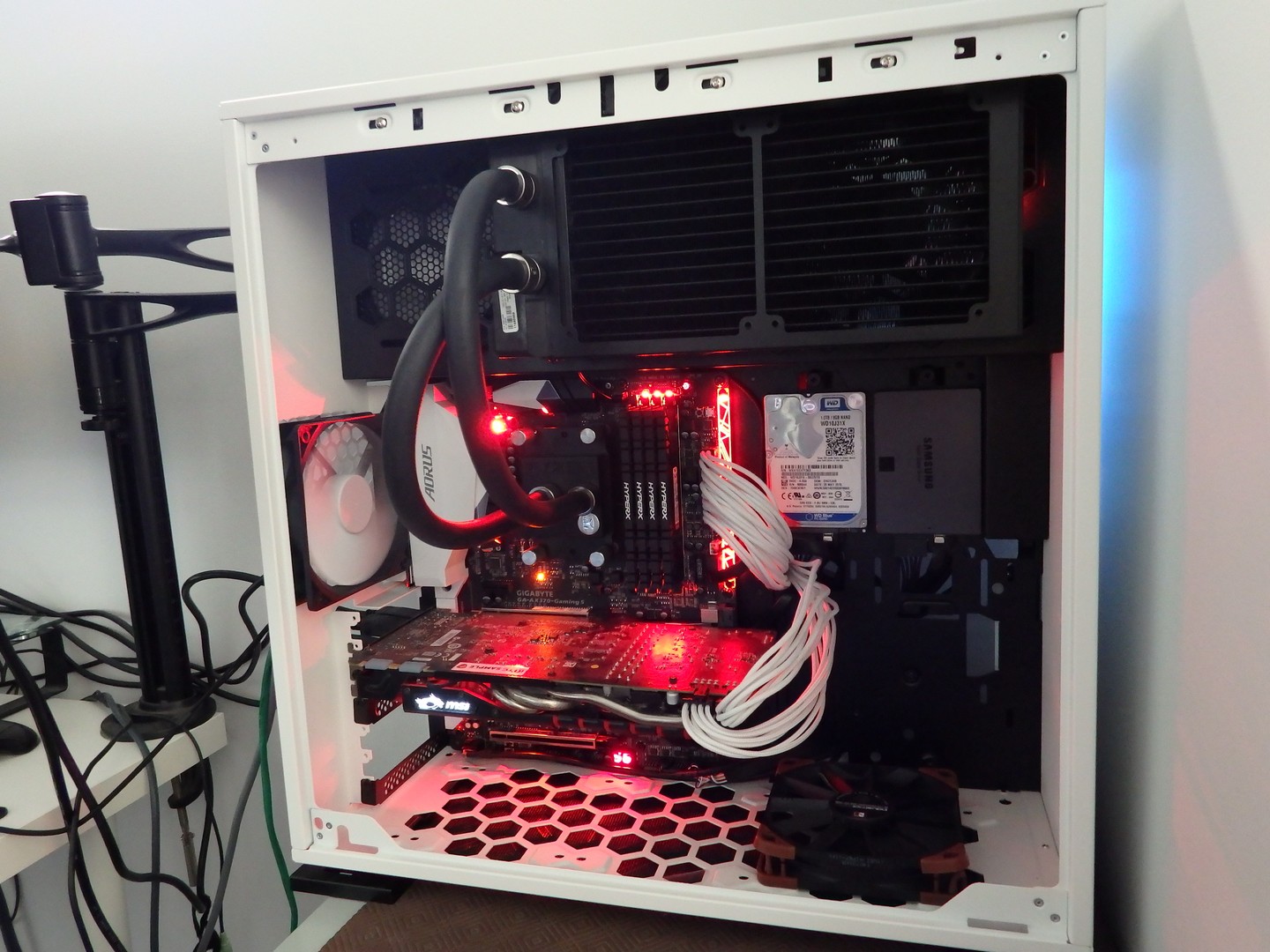
Test Platform Highlights
There were a few components that I wanted to give special mention to in our testing setup.
EK XLC-Predator
This is without a doubt the most impressive AIO water cooler I’ve seen. Installation was easy and the build quality is phenomenal. The cooler itself makes very little noise and the pump is virtually silent. There is a light to indicate that it is working which is really handy under idle load. The unit has a single fan header for the motherboard and takes a SATA power plug for the fans and pump. Less cables makes for a much easier and neater build. If you haven’t looked at one of these before, check it out before buy your next AIO cooler.
HyperX Predator DDR4 3333MHz 4x8GB kit
This is currently overkill for Ryzen but it was compatible, didn’t miss a beat and looks great in any rig due to the subtle design. We will be trying to make more use of this kit as BIOS updates come out.
Monitors
80% of the gaming testing and all of the benchmarking was done on a BenQ XL2730Z 144Hz monitor via DisplayPort. The XL2730Z is a great monitor and still going strong but for the productivity testing I went with our Viewsonic triple screen setup that uses 2 peripheral VX2457 75Hz screens and an XG2401 144Hz central monitor. This setup is great for productivity work and the review was written at this workstation. The Viewsonic monitors we use for the 5760×1080 workspace are competitively priced and have excellent colour reproduction for TN panels.
In Win 303
This case is great for motherboard reviews due to the open nature of the design. We hit a snag with this testing in that we couldn’t fit the glass side panel due to the thick radiator and hoses of the EK water cooler but it is a favourite case and nothing a pair of 90 degree hose fittings wouldn’t solve. The other alternative is to upsize our case to the beastly In Win 509… watch this space.
Gigabyte Aorus AX370 Gaming 5 motherboard
This is a premium motherboard with an attractive but agnostic aesthetic design. The board features RGB lighting to make it suitable for any build. The BIOS is very intuitive and easy to use. The adoption of the latest connectivity is also obvious with
- Dual LAN (including one Killer E2500 port)
- 9 temperature sensors
- 8 fan headers, SLI/Crossfire
- USB Type C
- Dual ALC 1220 audio chips with 120dB Signal to Noise Ratio
- NVMe PCIe Gen3 x4 M.2/U.2 connections
I liked the motherboard and the sound was fantastic for gaming, movies and music. Overclocking was also stable up to 3.9GHz. The utilities are easy to use and the installation process is automatic once you kick it off. I do need to declare that we had one issue with the motherboard in that the RGB lighting only worked in red so it didn’t impact our testing but it was a fault just the same. For context, it should be noted that this is the first time in 16 years that I’ve used a Gigabyte motherboard with a hardware fault – I’m not saying it doesn’t happen, just balancing one non-critical issue out with an observed pattern of reliability.
ADATA Dazzle DDR4 2800 16GB (2x8GB) LED RAM kit
I didn’t use this in the benchmarks but I did test it for compatibility and found it to be perfectly fine in the Ryzen test system. This RAM heatsink design is big and bold but in the Gigabyte board with red LEDs enabled, it looked great. The purpose of testing it was to confirm stability and compatibility of the kit in a Ryzen build – and it didn’t miss a beat for 3 solid days of use and system stress testing.
Cinebench Testing – Single and Multi Thread
Cinebench is a good way to test both single and multi-core performance. In single core performance, the i7-5930K performs 19 Cinebench points better than the stock clocked Ryzen 7 1700 but the Intel CPU loses out by 341 points in the multi-threaded test with less cores to handle the payload. This test also shows the value of the 3.9GHz overclock. The FX8350 is understandably left behind with an older architecture and only 4 cores/8 threads.

PCMark 8 Creative testing showed that the 1700 and i7-5930K are basically on par and the FX 8350 as expected falling behind substantially.

SuperPI is a single threaded benchmark that puts the CPUs into a single core, single thread foot race. The Intel i7-5930K has a convincing win in this regard. It’s worth stating that if single threaded performance is the main purpose of a system, CPUs like the i7-5930K and Ryzen 1700 are probably not the best choice. Single threaded performance is important in gaming to a certain extent but as game developers take advantage of multi-core systems, this factor will be reduced.
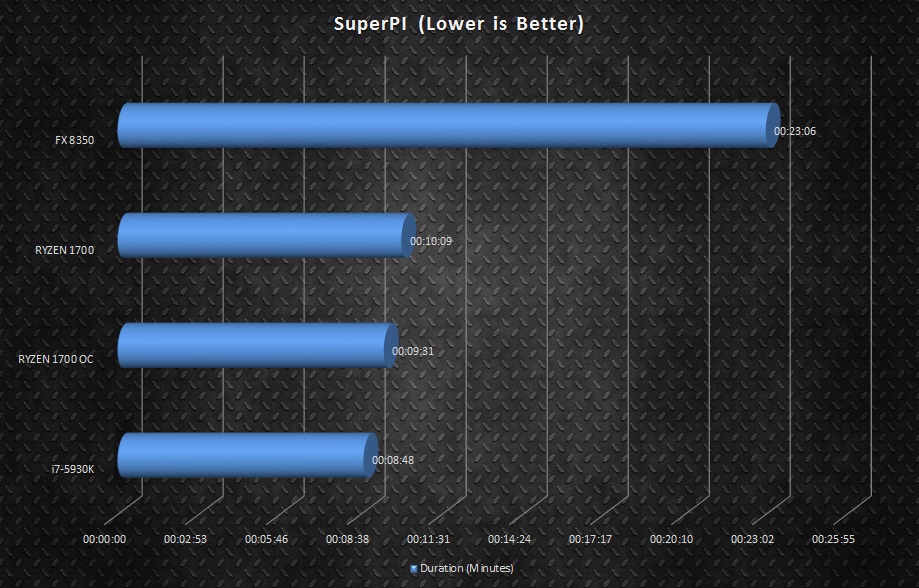
Gaming and Physics results
Unigine Heaven 4.0 Extreme
The Unigine Heaven benchmark scores showed the Intel platform ahead of the stock clocked Ryzen 1700 by 18 points or 0.91%. Given how close the FX8350 was with 1972 points, this test shows that the GTX 980 graphics card is the limiting factor.

3DMark
Firestrike Ultra results were also very close in terms of the overall scores but the physics scores had the Ryzen 1700 out in front, scoring more than double the numbers of the older FX8350. This test is for 4K ready systems. Interestingly, the overclocked 1700 scored better physics points but actually dropped in terms of the overall score.
The results in Firestrike Extreme were more typical with what I was expecting. The overall scores, whilst close were stepped as expected, along with the physics scores.

Once again, there wasn’t much of a gap between the i7-5930K and the Ryzen 1700 but the 1700 took the points with a 95pt margin in the Firestrike benchmark. The gap between the ageing FX8350 and the big boys also opened up more here.
The Sky Diver benchmark is lower end so I was expecting bigger numbers. Again, there really wasn’t much difference between the i7 and Ryzen but the benefit of an upgrade to the FX8350 is now pretty obvious.

3DMark’s Time Spy DX12 benchmark is the best indicator we have for DX12 and future titles. The CPU scores in this test were more telling and showed that the 8 core/16 thread Ryzen has a distinct advantage with more than 1000 points separating it from the i7-5930K.

Tomb Raider
Tomb Raider is an older DX11 benchmark and we were expecting to see the GTX 980 bottleneck the scores. All scores were within 1 FPS of each other showing that it’s worth checking what games you play before making the jump to upgrade. In this case, there is little value in upgrading from the FX8350.
Please note that this benchmark was run at 2560×1440 with the following settings.


Hitman (2016)
The DX12 performance at 2560×1440 on maximum settings gave Ryzen a slight advantage of 1 FPS over the i7 and a touch over 3FPS of a lead compared to the FX8350. Once again, the game is dependent on the Graphics card with minimal benefit being delivered by a better CPU.

The Division
Whilst the benchmark shows a tight spread here, it is a little misleading. The performance of the FX8350 looks better in the benchmark than it actually was at maximum settings running under DX12. Gameplay on the FX8350 was not smooth and the CPU was stressed more than the i7 of Ryzen competitors. So although the benchmark doesn’t indicate a benefit of upgrading in this case, after playing an hour on each platform I can tell you that gameplay is noticeably smoother on the i7 and Ryzen.

GTA V
The benchmark average FPS has this as a close race and in general gameplay with an hour of testing on each platform, the only noticeable difference was the FX8350 in that it felt slower and seemed to pause slightly from time to time.

Overclocking
Using the BIOS, Gigabyte Easy Tune and Ryzen Master, the best overclock I saw was 3.9GHz. 4.0GHZ was game stable but not “stress-test” stable. In the above graphs, the overclock delivers noticeable performance improvements with physics and synthetic benchmark results but has very little impact on gaming.
Thermals and Noise
The EK-XLC Predator cooler is extremely quiet and seemed to handle the 65W CPU’s thermal profile with ease. The highest temperature recorded was 65 degrees under stock conditions and 69 when overclocked although the fans made a bit more noise in that testing. When not overclocked, the CPU cooler didn’t register above ambient room noise on our decibel meter.
If you like a quiet PC, Ryzen 7 1700 is probably the pick of the bunch.
For multiple GPU testing, we had a pair of ASUS RX 470 STRIX cards. As a point of trivia, the STRIX mascot is a badass looking owl. If you think that owls are docile creepy birds that sit in trees and say ‘who’, think again. Owls are actually serious predators that can silently hover over their prey before snatching it up with scary-sharp talons. I saw a demonstration first hand in northern Queensland at a nature park that really opened my eyes as to how silent and powerful these birds can be. After using 3 graphics cards with ASUS STRIX coolers, the owl as a mascot is very appropriate. We will endeavour to get our hands on some higher end STRIX cards for benchmarking in the future to see how they go with a higher TDP.
Above: ASUS RX 470 STRIX in the AMD FX8350 test system
The results of this testing were hit and miss, so much so that we re-tested several times and even re-baselined all three test systems at least once to ensure the drivers, operating system and software were clean.
The AMD Crimson driver was version 17.3.1, for NVIDIA testing we used GeForce 3.78. Neither the Crimson Radeon Re-Live nor the GeForce Experience ‘helper’ applications were installed.
With a single card, the results were far more consistent and in-line with our expectations. The Crossfire results were more interesting, and in some cases disappointing. Multi-GPU configurations can be tricky and the debate over the value of two lower rated graphics cards over a single beast of a card is a subject for another article. The purpose of this testing was to see how RYZEN scaled with multiple graphics cards and we felt that the best opportunity the new CPU from AMD had to shine was with an AMD Crossfire setup.
All systems had a single slot gap between the graphics cards and operated in 8x/8x PCIE lane mode. We also kept the side panel off the case to ensure that thermal throttling didn’t impact the results. This gap is ample for the ASUS STRIX cooler on the RX 470 cards. As a side note, even with the side panel removed, the STRIX coolers were still surprisingly quiet – even while running both GPUs at 100% in Crossfire.
The scaling percentage shows the relative performance improvement or degradation when adding the second RX 470 STRIX to the system. A scaling value of 100% means that there is no benefit, more than 100% represents the relative performance increase delivered by the second card with a theoretical maximum of 200%. A value less than 100% is considered ‘negative scaling’ where the system/title performs better with just a single card.
Score Reviews
The following gallery shows the raw results of our multi GPU testing across AM4, 990FX and X99 platforms. One thing that really stands out is how the FX8350 CPU is holding back the overall 3DMark scores when the graphics score looks great in a multi-GPU setup. The 4 core/8 thread FX8350 is shown up in the 3DMark tests by the 6 core/12 thread i7-5930K and 8 core/16 thread Ryzen 7 1700
When it comes to Ryzen, the multi-GPU scores we saw with the crossfired RX 470 STRIX cards are less consistent across the series when compared to the single GTX 980 where it’s a solid performer.
3DMark Firestrike Ultra and Firestrike Extreme showed poorer comparative scaling than 3DMark Firestrike.
Scaling Percentage Review
These graphs show the percentage gains of crossfired RX 470 STRIX cards compared to a single RX 470 STRIX and then the more powerful GTX 980. These indicate a lack of maturity and optimisation of RYZEN in either the benchmark programs or the drivers when it comes to multi GPU.
Crossfire can be inconsistent regardless of the platform but we did see a trend of disappointing scaling results compared to the 990FX and X99 platforms. In single card performance, RYZEN appears to be unhindered and the results are either much more competitive or leading the way.
Some games like The Division don’t scale well on any platform – the 12% lead of the X99 platform over RYZEN and 990FX was a mere 1.1FPS but at ~36FPS for the benchmark it makes it look like a bigger lead than it really was. Other games like GTA V and Ashes of the Singularity gave us results that were too inconsistent to get a realistic average or consider a credible benchmark for this review so we had to leave them out. Hitman actually performed worse with 2 RX 470 STRIX cards in every test system – but at least it was consistently worse across the different platforms.
Then we look at Tomb Raider where the scaling improvement of a second RX 470 STRIX delivered a 198% scaling result basically doubling the performance of a single RX 470 STRIX. The Unigine Heaven benchmark also showed a 188% result, equalling the X99 platform. This indicated that the issues we encountered across titles with consistency is less likely to be a hardware or design issue and more probably a driver or optimisation issue in the benchmark application or engine.
Personally, I wouldn’t choose to buy a multi GPU solution from either AMD or NVIDIA and would favour a single higher tier GPU. That said, if I was to embark on a dual GPU configuration again (my last personal rig had 2xGTX 670 Windforce 3 cards in SLI), I’d be looking hard at the ASUS STRIX products. This cooler is extremely quiet, cool and in the case of both the RX 460 and RX 470 it is also compact. The utilities are easy to use, Aura lighting adds a level of awesomeness to the build and these cards also have a 4-pin fan header to make it even easier to manage GPU related airflow.
Whilst I enjoyed gaming on the Ryzen 7 1700 CPU, when I saw the under-utilized cores I wanted to start streaming. This wasn’t because I’d been keen to get into streaming my crappy gameplay to the world but simply ‘because I could’. Sadly, I don’t get to game as often as I’d like and most of my time when not running benchmarks is spent on productivity tasks.
Over the past month, I’ve needed to test a website content migration, convert media files in batches, manage compressed archives/backups and also do some photo work. During this time I found that Ryzen just “felt fast”. Media conversion seemed to take less time and I deliberately didn’t measure them until late in the review period because I wanted to establish a working perception first. I finally ran some benchmarks and the most telling was the comparison between the MSI X99 test bench and the Ryzen platform where I converted the same 4.3GB MKV file to an MP4. Both platforms had the same source and destination SSD model installed, both had 32GB of RAM, were running at stock settings (no overclock present) and had the same version of Handbrake on the same patch level of Windows 10. We’re talking apples and apples here folks.
- The i7 5930K converted the 4.3GB video file in 44 minutes and 17 seconds.
- The Ryzen 7 1700 converted the same file in 34 minutes and 25 seconds.
I wasn’t surprised that Ryzen was faster but the difference of almost 10 minutes made me run it again to be sure. The extra 2 cores/4 threads available to the 1700 over the 5930K was appreciated by Handbrake in this instance.
Ryzen for Gaming
“Ryzen isn’t good for gaming” – I’ve seen this posted on forums, other reviews, some YouTube videos and heard it around the traps. I’ve also now used a Ryzen 7 1700 CPU for over 200 hours.
I acknowledge that some games will benefit from a smaller but faster set of cores or even a single faster core in some cases depending on the design of the game and its engine. Other games will benefit from more cores to share the load. The thing I really dislike about the “Not good for gaming” statement is that the term “Gaming” is so broad and the requirements of gaming titles are equally as broad with some engines well optimised to take advantage of multiple cores and others so poorly optimised that they make the most high end systems look weak.
As a baseline, I’m used to gaming on an ~$820 i7-5930K CPU with 6 physical cores/12 threads, 32GB RAM and a GTX 980 graphics card. Switching to a Ryzen 7 1700 CPU with the same graphics card and the same 32GB of system RAM was anything but backwards – It also delivered a great gaming experience. Whilst gaming, I was watching the core utilisation through the System Info ARX app on the Logitech G910 Gaming Software. The Ryzen CPU wasn’t stretching its legs and generally operated at levels I’d consider wasteful when you think about how much processing grunt was available. Battlefield 1 was the exception where it was keeping the cores at a moderate load from time to time averaging a momentary peak load of about 75% across most cores when loading a level and a typical load of about 40% when actually playing. Playing games like Ghost Recon Wildlands, the Division, CIV V, ESO, Project Cars, COD Black Ops 3 and Fallout 4 wasn’t an issue at all with the system remaining cool, quiet and responsive at all times – I couldn’t have asked for more but the 1700 had plenty available in the tank anyway if I needed it.
The Ryzen 7 1700 isn’t a ‘Gaming’ CPU in my opinion though, it costs around $450 and has way more cores than a typical gamer needs. It’s a great all-rounder CPU, suitable for enthusiasts, content creators, gamers and developers. This is a CPU that does it all – work, play and anything in-between.
Price
At a street price of $449 for the 1700 model, it’s the cheapest Ryzen 7 you can buy and our benchmarks show that it is also a compelling value proposition when compared to the i7-5930K priced at $819. It is an expensive upgrade from the much lower spec FX 8350 in the context of gaming but for a content creator, developer, enthusiast or streamer, this is a compelling upgrade that they will notice.

Longevity
The older FX 8350 is about half the price of the new 1700 CPU but it offers about half the performance from a now obsolete socket. Do gamers need 8 cores with 16 threads? Unless they are streaming, probably not. But needs change over time and whilst Intel has 2 socket types to consider, AMD’s Ryzen keeps it simple with one socket and a history of sticking to it.
From an upgrade/obsolescence point of view, AM4 and Ryzen has a lot to like. AMD’s track record of AM3 and AM3+ support is very reassuring. The idea of spending a little extra to get that high end X370 motherboard is more palatable when you know that you will be able to swap out that CPU in a few years and sell the old one on eBay without changing your board or needing to do a re-install of windows.
If we have a look at the 990FX Gaming 5 motherboard from Gigabyte as seen in our recent AMD test bench series, that board brings USB 3.1 Type C, M.2 storage, high end audio, Killer LAN and other technology on a brand new board (in 2016) that you could use with a CPU from 2009. Sure the CPU may be long in the tooth but depending on the workload involved, it adds to the effective service life of the CPU – this was only made possible by AMD maintaining a commitment to the socket.
The other thing to consider is that you could buy an AM4 socket APU (once available) and then upgrade later to something more powerful like Ryzen 7 for just the cost of the CPU.
Conclusion
Ryzen has been worth the wait. AMD has delivered a solid processor at a disruptive price point. The Ryzen 7 1700 may not have the XFR feature but it’s still unlocked and overclocks provided that you have the right motherboard chipset.
Power draw and temperatures are also in check with Ryzen 7 and whilst the overclock doesn’t look massive in terms of clock speed, when it’s applied across the 8 physical cores the results are still impressive.
The Ryzen 7 1700 CPU is a good enthusiast option – especially if you are looking for versatility with regard to software and not looking to tweak the hardware to its absolute limits. The competitive price and impressive multi core performance means that you can game, stream or run Virtual Machines on the same platform. We run VMs to validate backups and test system changes and whilst streaming isn’t a priority now, it might be in the future. I dislike the term ‘futureproof’ but AMD has certainly delivered a platform with a strong longevity focus with AM4 and Ryzen. From what I’ve seen here and in the AMD press briefings, I wouldn’t have any jitters about buying Ryzen 7 now with the intention of running it for at least 3 years as a core platform.
What we see here in the Ryzen 7 1700 is a balanced performer with overclocking headroom and a conservative TDP at the high end of currently available CPU offerings. If you only play games and don’t stream, perhaps wait to see what Ryzen 5 has to offer. If you are looking for a CPU that gives you the option of dabbling in the creative side of computing without an upgrade the Ryzen 7 1700 hits the sweet spot in terms of price to performance.
Welcome back AMD.
| AMD Ryzen 7 1700 CPU | |
 |
|
|
PROS |
|
|
CONS |
|
  |
|
























